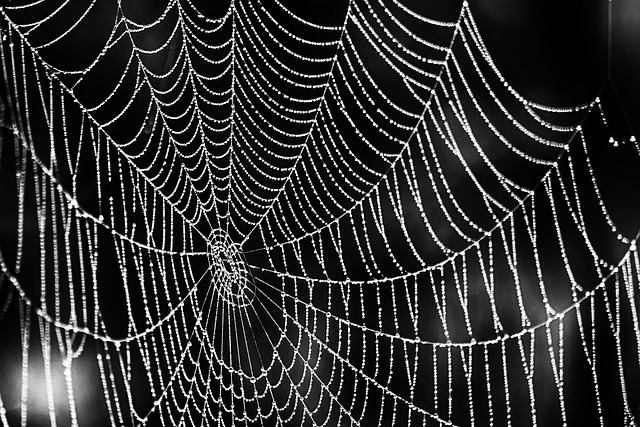Understanding spider behavior and leveraging advanced technologies like motion sensors, smart surveillance systems, AI, and innovative repellents/traps is crucial for effective spider infestation prevention. A multi-faceted approach integrating these modern tools with traditional methods creates a robust defense system that detects, predicts, and disrupts spider activity, making it difficult for them to establish colonies.
Spiders can quickly turn a home or business into a labyrinth of webbed chaos. But with advanced technologies emerging in spider infestation prevention, there’s hope for arachnophobes everywhere. This article delves into effective strategies, from understanding spider behavior to employing cutting-edge detection and repellents. We explore innovative solutions like AI sensors, advanced traps, and holistic approaches to achieve lasting spider infestation prevention.
Understanding Spider Behavior: Key to Effective Deterrence
Understanding the behavior of spiders is a crucial step in implementing effective deterrence methods. Spiders are arachnids known for their intricate web-spinning abilities and often act as beneficial predators, controlling insect populations. However, when they invade human spaces, it becomes essential to address the issue through science and technology. By studying spider habits, researchers can identify patterns that lead to successful infestation prevention.
For instance, different species have distinct preferences for habitats, food sources, and climate conditions. Some spiders are more active during the day, while others prefer the cover of night. This knowledge allows for targeted strategies. Advanced technologies, such as motion sensors and smart surveillance systems, can be employed to monitor areas prone to spider activity. These tools enable early detection, helping to stop infestations before they escalate, ensuring a more effective and efficient spider infestation prevention approach.
Advanced Detection Technologies: From Sensors to AI
Advanced technologies are transforming the way we detect and manage spider infestations, offering innovative solutions for spider infestation prevention. Traditional methods often rely on visual inspections and manual removal, which can be time-consuming and ineffective in identifying hidden spider nests or large-scale infestations.
Today, advanced detection technologies such as sensors, cameras, and artificial intelligence (AI) are gaining traction. These tools employ heat sensors to track body temperature variations, motion detectors to identify movement patterns, and computer vision algorithms to analyze visual data for spider activity. AI-powered systems can even learn and adapt to recognize specific spider species, enhancing the accuracy of early detection. This technological advancement not only improves prevention efforts but also contributes to a more efficient and targeted approach to managing spider infestations.
Innovative Prevention Methods: Repellents, Traps, and More
In the quest for effective spider infestation prevention, innovative methods have emerged beyond traditional cleaning practices. Repellents play a pivotal role in this regard, offering a chemical or natural solution to keep spiders at bay. These range from commercial sprays that utilize synthetic compounds to plant-based essential oils known for their aromatic properties and ability to deter arachnids.
Complementing repellents are advanced spider traps designed with modern technology. These traps employ light and heat in combination, mimicking the conditions spiders seek, but with a twist—once ensnared, the traps safely contain and eliminate spiders without causing them harm. Such innovations represent a significant step forward in spider infestation prevention, providing both effectiveness and humane solutions for managing these eight-legged intruders.
Integrating Solutions: A Holistic Approach to Spider Infestation Prevention
In addressing spider infestation prevention, a holistic approach that integrates diverse solutions is increasingly recognized as the most effective strategy. This involves combining advanced technologies with traditional methods to create an impenetrable barrier against spiders. For instance, sensors and cameras equipped with artificial intelligence (AI) can be strategically placed in problem areas to detect early signs of spider activity. These smart devices not only identify spiders but also monitor their behavior, helping to predict and prevent potential infestations.
Simultaneously, specialized treatments, such as targeted spraying and baiting techniques, are deployed to disrupt the spiders’ life cycle. Heat or vibration sensors can be utilized to deter spiders from entering structures, while mechanical traps and sticky barriers provide physical obstacles. This multi-layered defense system ensures that spiders face numerous challenges, making it significantly harder for them to establish and expand their colonies, thus achieving effective spider infestation prevention.
In conclusion, addressing spider infestation prevention requires a multi-faceted approach. By understanding spider behavior, leveraging advanced detection technologies like sensors and AI, employing innovative prevention methods such as repellents and traps, and integrating these solutions for a holistic strategy, we can effectively deter and manage spider populations. These cutting-edge techniques, combined with a deep understanding of these arachnids, offer promising avenues to keep homes and businesses free from unwanted spider visitors.
